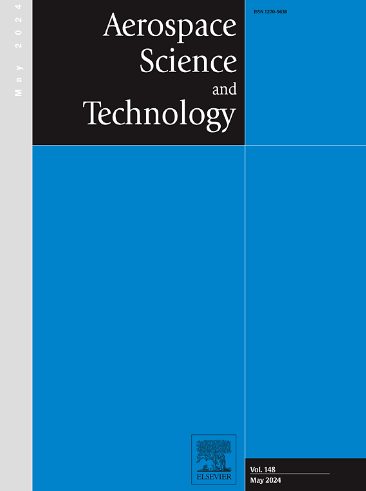基于 DNN 和迁移学习的双旋弹丸非稳态气动建模和飞行轨迹仿真
IF 5
1区 工程技术
Q1 ENGINEERING, AEROSPACE
引用次数: 0
摘要
为评估双旋弹丸的飞行性能和气动特性,通常采用计算流体动力学和刚体动力学(CFD/RBD)耦合方法,该方法可同时求解飞行力学和流场。然而,由于需要进行大量的 CFD 计算,因此效率大打折扣。本文开发了一种结合深度神经网络和迁移学习的非稳态气动建模方法,可以准确预测不同初始条件下双旋翼弹丸的非稳态气动性能。考虑到短期历史时刻的飞行状态和气动数据的影响,我们将其整合为气动模型的输入特征,以减少长期历史数据的影响。为了提高模型在不同初始条件下的泛化能力,我们通过迁移学习,利用新条件下的少量数据对建立的空气动力学模型进行微调。分别通过内插和外推预测案例对所提出的方法进行了验证。结果表明,与长短期记忆神经网络和自回归移动平均法相比,所提出的方法在双旋翼弹丸的非稳态气动建模中可以获得更好的精度和泛化能力。通过在时域中耦合飞行动力学方程和气动模型,飞行模拟只需几秒钟,与耦合 CFD/RBD 方法相比,计算时间可减少三个数量级。本文章由计算机程序翻译,如有差异,请以英文原文为准。
Unsteady aerodynamic modeling and flight trajectory simulation of dual-spin projectile based on DNN and transfer-learning
To evaluate flight performance and aerodynamic characteristics of a dual-spin projectile, the coupled computational fluid dynamics and rigid body dynamics (CFD/RBD) method is commonly used, which can simultaneously solve the flight mechanics and flow field. However, the efficiency is compromised by the large number of CFD calculations required. This paper develops an unsteady aerodynamic modeling method that combines deep neural networks and transfer learning, which can accurately predict unsteady aerodynamics of dual-spin projectiles under varying initial conditions. Considering the influence of flight state and aerodynamic data from short-term historical moments, we integrate them as input features of the aerodynamic model to reduce the impact of long-term historical data. To enhance the model generalization under varying initial conditions, we fine-tune the built aerodynamic model using small amounts of data under new conditions by transfer learning. The proposed method is validated through interpolated and extrapolated prediction cases, respectively. The results indicate that the proposed method can achieve better accuracy and generalizability than long short-term memory neural networks and autoregressive moving average method in unsteady aerodynamic modeling of the dual-spin projectile. By coupling the flight dynamics equations with the aerodynamic model in the time domain, the flight simulation only takes a few seconds, which can reduce computing time by three orders of magnitude compared to the coupled CFD/RBD method.
求助全文
通过发布文献求助,成功后即可免费获取论文全文。
去求助
来源期刊

Aerospace Science and Technology
工程技术-工程:宇航
CiteScore
10.30
自引率
28.60%
发文量
654
审稿时长
54 days
期刊介绍:
Aerospace Science and Technology publishes articles of outstanding scientific quality. Each article is reviewed by two referees. The journal welcomes papers from a wide range of countries. This journal publishes original papers, review articles and short communications related to all fields of aerospace research, fundamental and applied, potential applications of which are clearly related to:
• The design and the manufacture of aircraft, helicopters, missiles, launchers and satellites
• The control of their environment
• The study of various systems they are involved in, as supports or as targets.
Authors are invited to submit papers on new advances in the following topics to aerospace applications:
• Fluid dynamics
• Energetics and propulsion
• Materials and structures
• Flight mechanics
• Navigation, guidance and control
• Acoustics
• Optics
• Electromagnetism and radar
• Signal and image processing
• Information processing
• Data fusion
• Decision aid
• Human behaviour
• Robotics and intelligent systems
• Complex system engineering.
Etc.
 求助内容:
求助内容: 应助结果提醒方式:
应助结果提醒方式:


